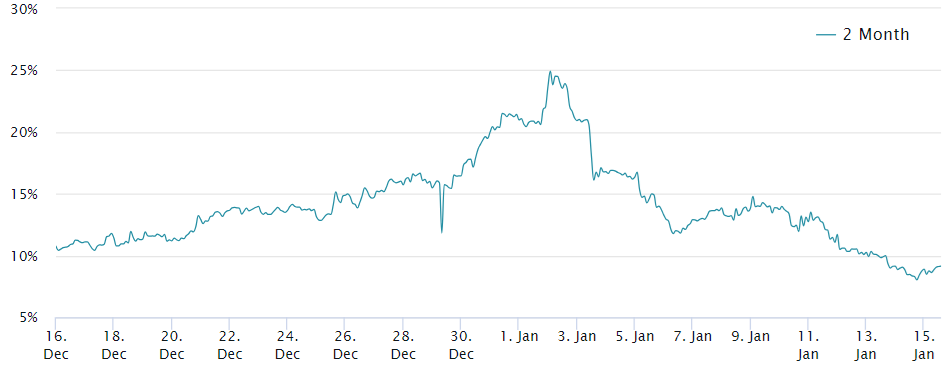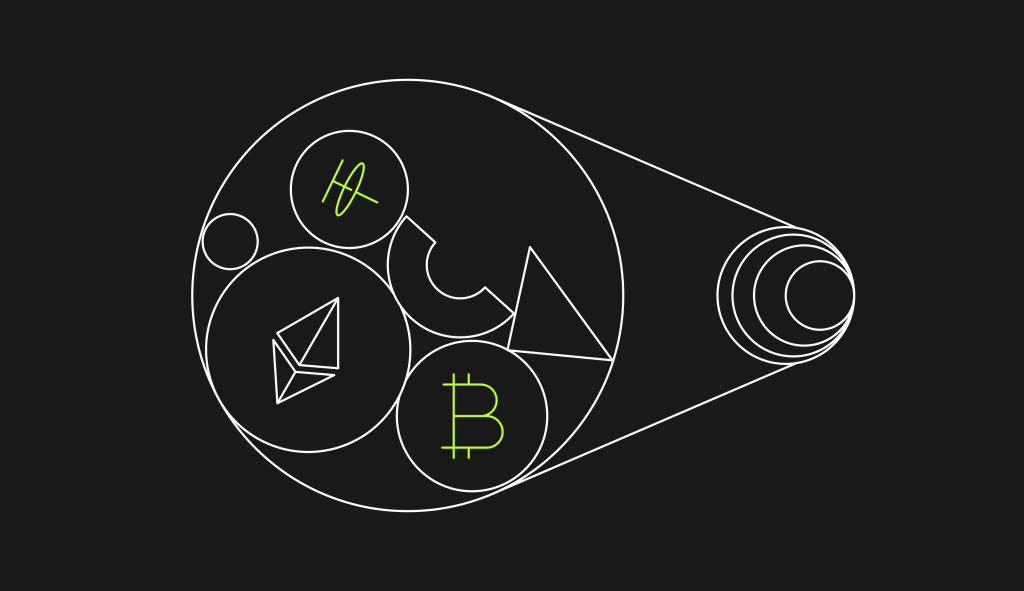Bitcoin defends key price level 6 times — Is $44K next?

Bitcoin’s futures premium indicates that the bullish momentum is no longer present, so is BTC price at risk of a trend reversal?

Bitcoin derivatives have flipped, suggesting that the bullish momentum seen over the past month is now gone, while Bitcoin’s (BTC) correlation to traditional markets has noticeably increased.
Bitcoin price resilient above $41,800
BTC price experienced moderate volatility toward the end of Jan. 14 as its price plunged to $41,690, paring 3% on Jan. 15.
Related: BTC speculators dump $5B — 5 things to know in Bitcoin this week
More interestingly, this was the sixth time that the $41,800 support was tested in less than a month. Traders are now questioning if the latest movement is a sign of strength and what the drivers for a potential rally above $44,000 could be.

Some analysts attribute the 9.1% BTC price correction on Jan. 12 to Bitcoin miners’ outflows, with CryptoQuant reporting that nearly $1 billion worth of BTC was sent to exchanges — a six-year high.
Investors fear that Bitcoin’s hash rate, which has increased by 44% in the past six months, will force miners to sell coins at a much higher pace, including their holding positions.
Digital Asset manager CoinShares predicts that the average cost to mine 1 BTC following the April 2024 halving will surge to $37,800.
CoinShares’ report encompasses 19% of the current Bitcoin mining hashing power and estimates that only five out of the 14 companies under analysis will remain profitable after the halving. In essence, traders have reason to believe that Bitcoin miners’ outflows to exchanges may continue.
BTC correlation versus gold, stocks rises
BTC price was relatively flat in the 30 days ending Jan. 15, meaning the spot Bitcoin exchange-traded fund (ETF) debut on Jan. 11 had little impact, at least from a longer time frame.
Curiously, both S&P 500 futures and gold prices in U.S. dollars are up 0.5% in the same period. In fact, Bitcoin’s 50-day correlation to the U.S. stock market and gold has been high for the past month.

Notice how Bitcoin’s 50-day price correlation versus gold has been above 65% since November and above 75% relative to the S&P 500 futures for the past three weeks.
Those numbers drastically vary over time, but the latest data signals that macroeconomic drivers have affected traditional assets and Bitcoin in a similar way.
Related: Bitcoin and correlations — Examining the relationship between BTC, gold and the Nasdaq
For instance, Germany, Europe’s largest economy, announced on Jan. 15 an adjusted 0.1% gross domestic product contraction in 2023 versus the prior year. More concerningly, Germany’s economic ministry mentioned that “current early indicators do not signal a quick economic recovery,” according to Reuters.
In the U.S., inflation remains the biggest source of concern after the Consumer Price Index grew 3.4% in November. According to Rubeela Farooqi, chief economist at High Frequency Economics, “These readings support the U.S. Federal Reserve’s view that the policy stance should remain restrictive for some time.”
In short, investors realized that it might take longer than anticipated for the central banks to effectively reduce interest rates, causing investors to favor fixed-income investments.
Related: On-chain data in a volatile market – How traders stay ahead of the curve
On one hand, there is the prospect of the U.S. issuing trillion-dollar stimulus packages due to its budget constraints. On the other, the inflationary pressure limits central banks’ ability to lower interest rates.
Bitcoin futures data no longer bullish
To understand whether Bitcoin investors have flipped bearish, one should analyze the BTC futures premium, also known as the basis rate.
Professional traders prefer monthly contracts due to the absence of a funding rate. In neutral markets, these instruments trade at a premium of 5% to 10% to account for their extended settlement period.

Data reveals that the BTC futures premium stabilized at 9%, under the neutral threshold — as opposed to the bullish momentum that lasted until Jan. 12.
While far from the bearish structure, which would require an annualized premium below 5%, it becomes evident that Bitcoin investors are no longer expecting its price to pump in the short term.
One might never find out what exactly triggered the correction to $41,690, and it might as well be related to BlackRock’s CEO Larry Fink calling the spot ETF a “mere stepping stone to tokenization” of real-world assets, which is definitely not beneficial for BTC price in the short term.
Fink also recently commented on Bitcoin, saying:
“I don’t believe it’s ever going to be a currency. I believe it’s an asset class.”
This article is for general information purposes and is not intended to be and should not be taken as legal or investment advice. The views, thoughts, and opinions expressed here are the author’s alone and do not necessarily reflect or represent the views and opinions of Cointelegraph.






… [Trackback]
[…] Read More to that Topic: x.superex.com/news/bitcoin/2626/ […]
… [Trackback]
[…] Find More Info here to that Topic: x.superex.com/news/bitcoin/2626/ […]
… [Trackback]
[…] Here you will find 10905 more Information on that Topic: x.superex.com/news/bitcoin/2626/ […]
… [Trackback]
[…] Here you can find 32902 more Info on that Topic: x.superex.com/news/bitcoin/2626/ […]
… [Trackback]
[…] Find More to that Topic: x.superex.com/news/bitcoin/2626/ […]
… [Trackback]
[…] Read More here on that Topic: x.superex.com/news/bitcoin/2626/ […]
… [Trackback]
[…] Find More to that Topic: x.superex.com/news/bitcoin/2626/ […]
… [Trackback]
[…] Information on that Topic: x.superex.com/news/bitcoin/2626/ […]
… [Trackback]
[…] Info on that Topic: x.superex.com/news/bitcoin/2626/ […]
… [Trackback]
[…] Find More Information here to that Topic: x.superex.com/news/bitcoin/2626/ […]
… [Trackback]
[…] Read More here to that Topic: x.superex.com/news/bitcoin/2626/ […]
… [Trackback]
[…] Read More Info here on that Topic: x.superex.com/news/bitcoin/2626/ […]
… [Trackback]
[…] There you can find 47505 more Info on that Topic: x.superex.com/news/bitcoin/2626/ […]
… [Trackback]
[…] Info on that Topic: x.superex.com/news/bitcoin/2626/ […]
… [Trackback]
[…] Read More here to that Topic: x.superex.com/news/bitcoin/2626/ […]
… [Trackback]
[…] Information on that Topic: x.superex.com/news/bitcoin/2626/ […]
… [Trackback]
[…] Find More Info here to that Topic: x.superex.com/news/bitcoin/2626/ […]
… [Trackback]
[…] Find More on to that Topic: x.superex.com/news/bitcoin/2626/ […]